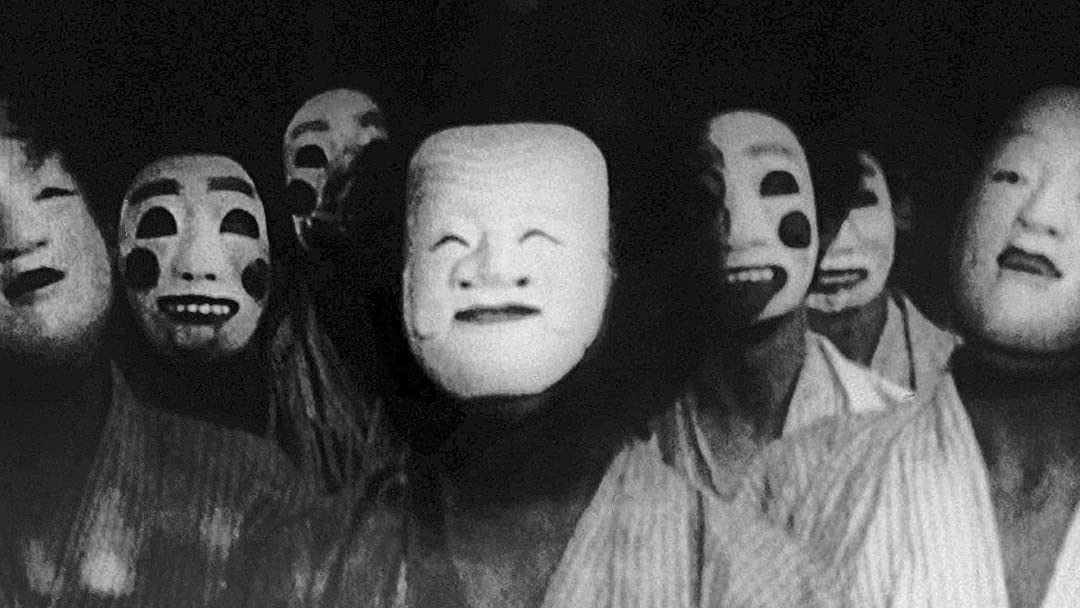Teinosuke Kinugaska’s experimental silent film blends classic ideas of Surrealist art with a uniquely Japanese aesthetic.

A major idea in Surrealism is the concept of marrying two separate themes through a coincidental or minor connection. This idea was introduced by the author of the hallucinatory, disturbing prose poem Chants De Maldoror, who went under the name Comte de Lautreamont. The Surrealists, headed by Andre Breton in Paris during the 1920’s, hailed the book as a bible, and described their movement using a quote from the work, “as beautiful as the chance encounter of a sewing machine and an umbrella on an operating table.”
This idea of the random becoming the logical is inherent in Surrealist works of art, whether they be literature or film. The opening scenes of Teinosuke Kinugaska’s film A Page of Madness works within this idea. A dancing woman becomes, through a series of transitions and superimpositions, a woman raving around madly in her cell. Thus we are introduced to the film’s setting, a lunatic asylum in the countryside.
The film follows the janitor of the asylum, who, out of remorse, has taken the job to be near to his wife who is incarcerated due to her distress at his cruelty. When his daughter visits and announces she is to be married, the janitor becomes concerned that her fiancé may learn about the condition of the mother and call off the wedding. At the time, it was still widely considered by society that mental illness was inherited. The janitor’s interference with his wife’s treatment eventually leads him to have hallucinatory visions and sustained dreams that blur his own reality. An inmate starts a relationship with his daughter and begins treating the janitor as a father-in-law. The film ends with the beautifully melancholic vision of the janitor imagining himself handing out masks to the inmates in an effort to give them happy faces.
The Surrealists were fascinated and inspired by dreams and their potential insights into the psyche. They hailed the work of Sigmund Freud and kept records of their own dreams and visions in attempts to reach new, heightened levels of consciousness. They were also, in a way that might seem problematic now, fascinated by mental illness, and believed that artists who suffered from psychological ailments held the power of foresight and a heightened spiritual awareness. A Page Of Madness revolves heavily around this idea, about unlocking the truth of your own thoughts through hallucinatory experiences and distorted or contorted visions of the world and of yourself.
The story and outline for the film was written in collaboration with legendary Japanese author and recipient of the 1968 Nobel Prize for Literature, Yasunari Kawabata, best know for his short, poetic novels such as Snow Country and Thousand Cranes. Kawabata attempted to compose his novels as he would a haiku, keeping his stories simple and his dialogue sparse. A Page Of Madness sees Kawabata exploring a slightly more complex and political idea, yet the ideas of love and family so favoured in his fiction still remain relevant in the film.

A Page Of Madness was released in 1926. Being a silent film, it was accompanied in theatres by what was called a benshi, who narrated the film, often playing multiple characters or explaining the story to the audience. After its release, however, the film was considered lost for forty-five years, until it was re-discovered by Kinugaska in his shed in 1971. It has since been screened to contemporary audiences with live music accompaniment, and was even voted as one of the top one hundred best horror movies of all time by Slant Magazine.
Many people view Japanese art as stuck in tradition, and assume it works within outdated ideals and a strict regime of rules and routines. However, even as far back as 1926 when A Page Of Madness was released, there were groups of artists looking to break out of natural representation and introduce avant-garde ideas into Japanese art. A Page Of Madness reflects the worldwide influence of Surrealism on filmmaking, and demonstrates that revolutionary ideas obey no cultural boundaries.
Subscribe to FIB’s Weekly Alchemy Report for your weekly dose of music, fashion and pop culture news!






